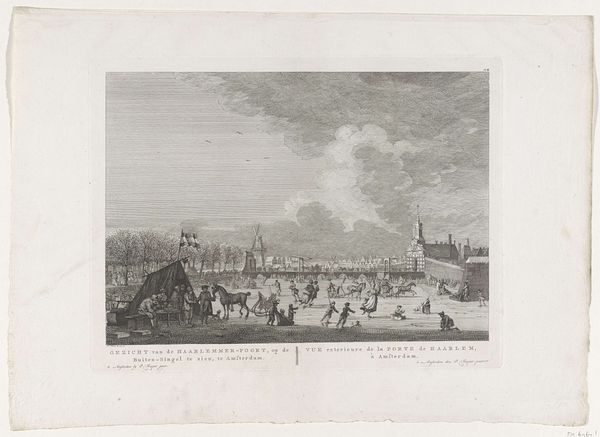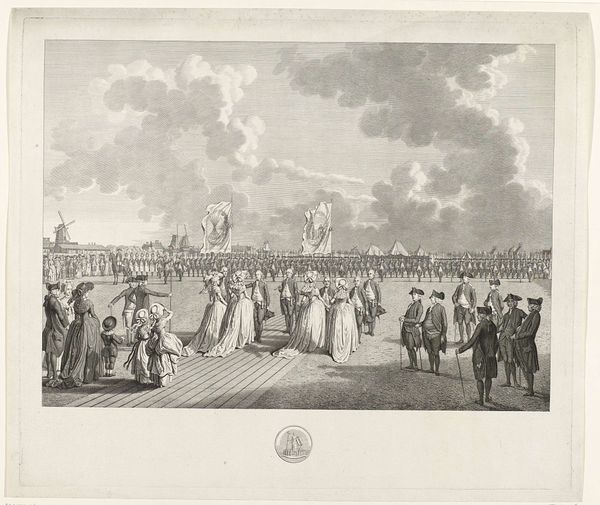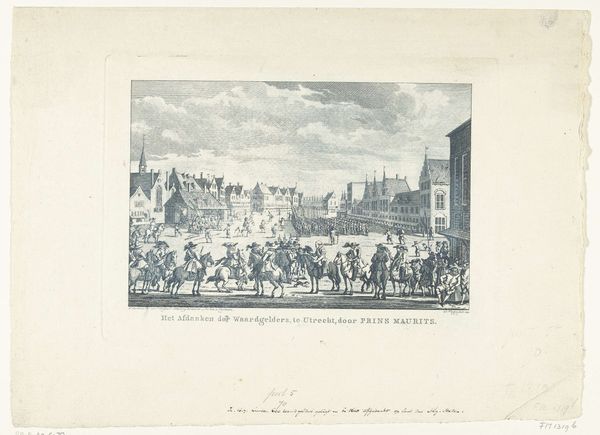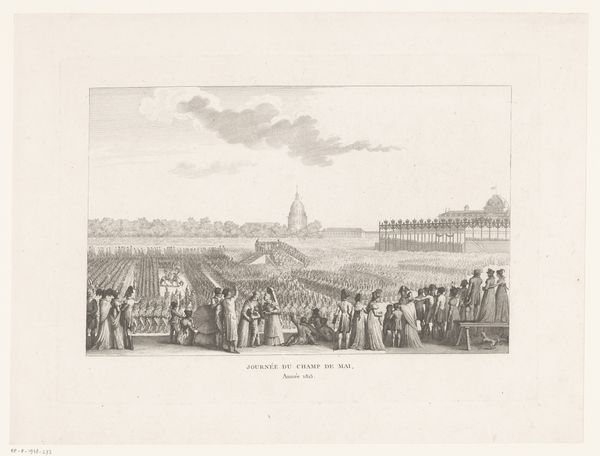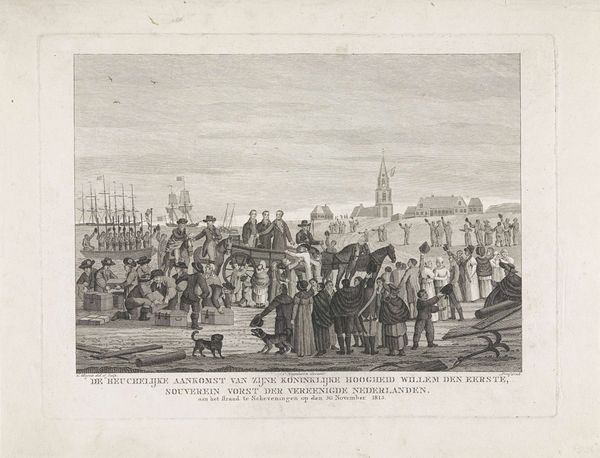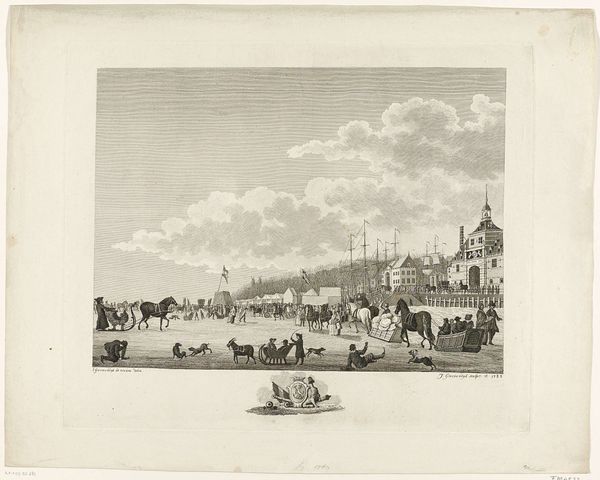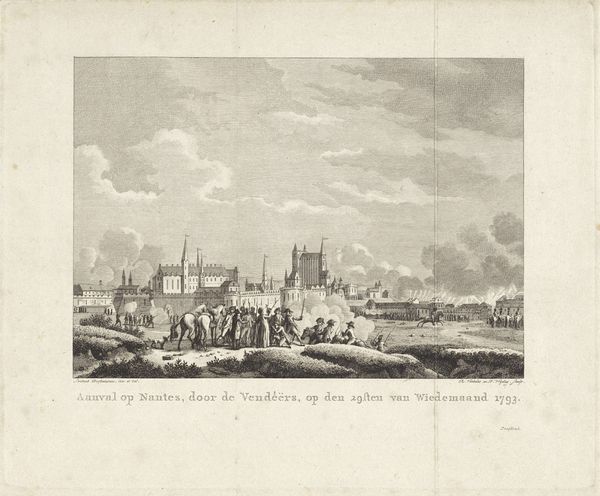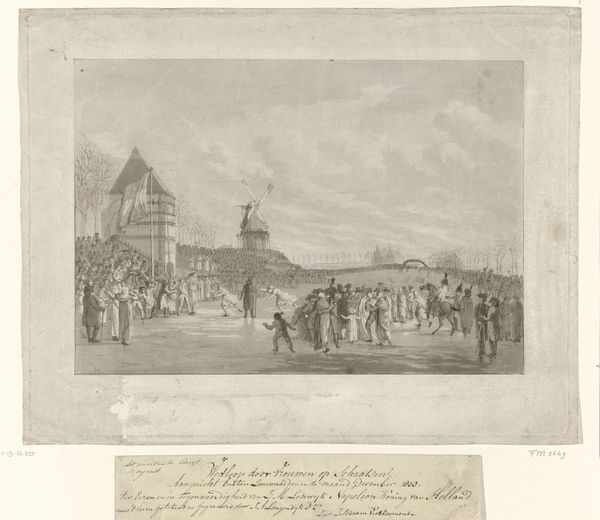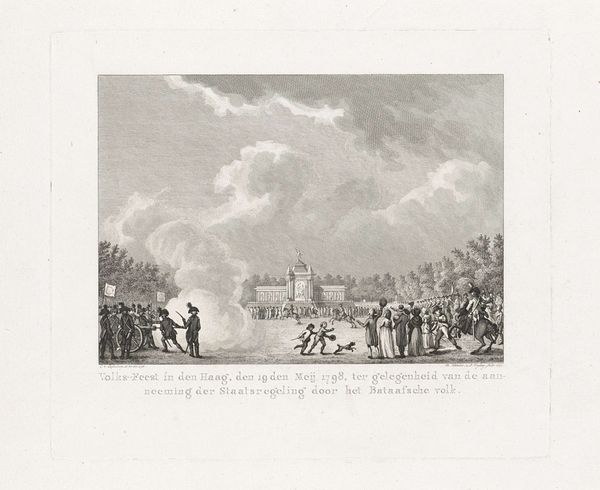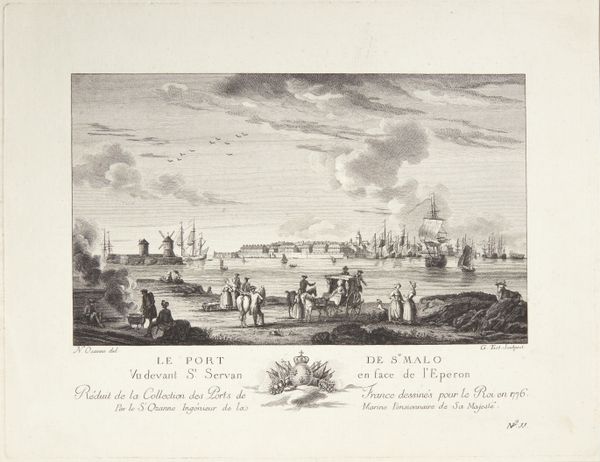
print, engraving
# print
#
old engraving style
#
romanticism
#
cityscape
#
genre-painting
#
engraving
Dimensions: height 300 mm, width 383 mm
Copyright: Rijks Museum: Open Domain
Curator: This engraving, “IJspret te Harlingen, 1823,” by Willem Hendrik Hoogkamer, depicts a bustling winter scene. Note the detailed application of the engraving, an intense and demanding production process. What strikes you initially? Editor: Well, I'm drawn to the figures populating the ice. They seem engaged in everyday activities despite the freezing weather, a snapshot of ordinary life transformed into something beautiful, or at least interesting. How do you interpret that? Curator: I look at the materiality of the print itself. Engravings were reproduced for a mass audience. This image of winter leisure wasn’t just about depicting a scene; it was about disseminating a particular view of Dutch society to a wider public through printmaking, an accessible medium. Editor: So, the choice of engraving over, say, painting, influenced the social impact? Curator: Precisely. Engraving democratized art. It allowed scenes like this one – leisure, trade, community – to circulate among different classes. Consider the labor involved in producing multiple copies; each line carefully etched, a testament to craftsmanship and the value placed on reproduction. Think also, about its distribution, and who has access to the image, thus access to the idea behind it? Editor: That shifts my perspective. I was focused on the aesthetic, but you’re highlighting the socioeconomic factors. Curator: Always! What materials were used? How was it made? And how did its mode of production influence its reception and impact? These are questions we must ask ourselves, as cultural researchers. Editor: It’s fascinating to consider this image as a product of its time, both in its depiction and its production. Curator: Indeed. By examining the material conditions of its creation and circulation, we gain a richer understanding of its cultural significance. It’s not just about what's depicted, but about how and why it was depicted in this particular way, and the labor involved, all influencing access and ideas.
Comments
No comments
Be the first to comment and join the conversation on the ultimate creative platform.
